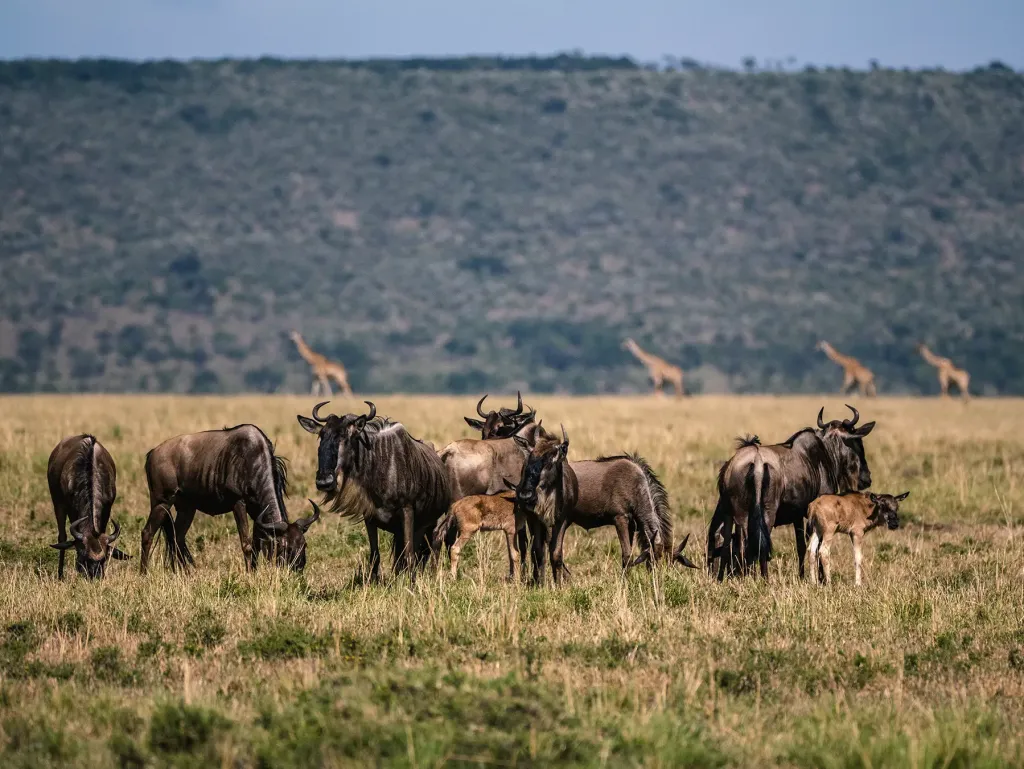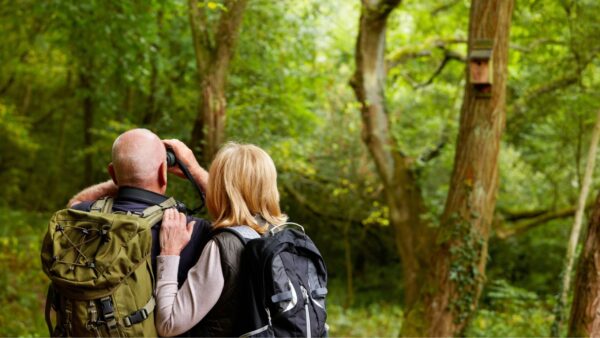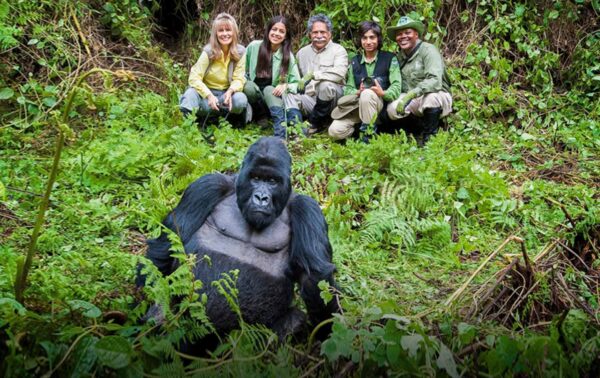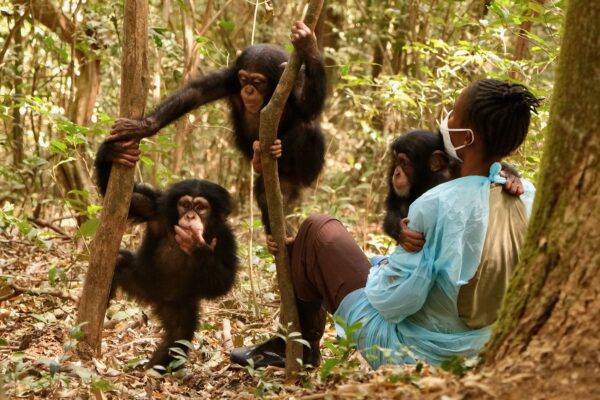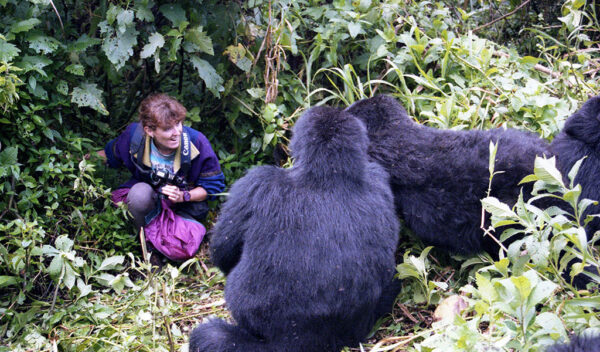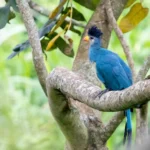
How Many Days Should I Spend on a Uganda Birding Safari?
November 21, 2025
How Many Bird Species Can I See on a Uganda Birding Safari?
November 21, 2025How Many Days Do I Need for a Great Migration Safari?
The Great Migration is arguably the most spectacular wildlife phenomenon on Earth, attracting travelers from across the globe to witness millions of wildebeest, zebras, and gazelles moving across East Africa in search of fresh grazing lands. Yet, one of the most common questions we receive at Renai Safaris is: How many days do I need for a Great Migration Safari? Planning the ideal duration of your safari is essential to maximize wildlife sightings, enjoy cultural experiences, and create memories that will last a lifetime.
Understanding the Great Migration: How Many Days Do I Need for a Great Migration Safari?
The answer is nuanced because the Great Migration spans multiple countries and ecosystems, primarily Kenya and Tanzania. While some travelers prefer a short 3–4 day safari focusing on a single national park, others opt for longer itineraries that cover the Serengeti in Tanzania and the Maasai Mara in Kenya. A comprehensive approach ensures that you witness the herds at critical moments, including river crossings, calving season, and predator-prey interactions.
Combining Kenya Wildlife Safaris and Tanzania Wildlife Safaris with cultural experiences also enhances your journey. Visiting Maasai villages in Kenya or the Hadzabe community in Tanzania allows you to understand the human side of the landscape, making your safari not just a wildlife adventure but a cultural immersion. Furthermore, travelers can extend their journey to include Rwanda Gorilla Trekking Safaris or Tanzania Chimpanzee Tracking Safaris, creating an East African wildlife circuit that is both varied and unforgettable.
Why the Duration of Your Great Migration Safari Matters
Many travelers ask: How many days do I need for a Great Migration Safari to see the best wildlife action? The duration significantly influences the quality of your safari experience. The Great Migration is a year-round event, but wildlife movements are seasonal. For instance, river crossings along the Mara River in Kenya are most dramatic between July and October, while the Serengeti calving season typically occurs between January and March.
Renai Safaris recommends at least 7–10 days for a comprehensive Great Migration Safari. This duration allows you to explore multiple national parks, including the Serengeti, Ngorongoro Crater, Maasai Mara, and Tarangire National Park, while giving you flexibility to observe key moments of the migration. A longer itinerary also permits time for guided bush walks, night drives, and birding excursions such as Kenya Birding Safaris, where you can spot exotic species alongside spectacular migratory patterns.
Moreover, extending your safari gives you time to experience cultural interactions. Visiting Maasai or Samburu communities during your Kenya Cultural Safaris offers insight into the traditions and daily life of people who coexist with wildlife. Similarly, in Tanzania, encounters with local tribes enrich your Tanzania Cultural Safaris, making your journey both educational and memorable. Longer safaris also reduce travel fatigue, allowing travelers to enjoy each day fully rather than rushing from park to park.
How Many Days Should I Spend in Tanzania for the Great Migration?
Travelers frequently ask: How many days do I need for a Great Migration Safari specifically in Tanzania? Tanzania is home to the Serengeti National Park and the Ngorongoro Conservation Area, two of the most iconic safari destinations in Africa. Depending on the season, a 5–7 day itinerary in Tanzania can offer extraordinary encounters with the migrating herds.
Renai Safaris curates itineraries that balance game drives with opportunities for cultural engagement. For example, after observing the Great Migration in the Serengeti, guests can descend into the Ngorongoro Crater for a half-day safari, followed by a visit to Maasai villages to learn about traditional beadwork, dances, and pastoral life. Combining Tanzania Wildlife Safaris with Tanzania Cultural Safaris creates an experience that is both thrilling and enriching.
Travelers may also wish to include Tanzania Chimpanzee Tracking Safaris in Mahale Mountains National Park or Gombe Stream National Park as an extension. This not only diversifies the wildlife encounters but allows you to see East Africa’s incredible primate diversity alongside the dramatic spectacle of the Great Migration. Planning your days strategically ensures that you witness predator-prey interactions, river crossings, and grazing herds while also having time to explore cultural landscapes.
Can Kenya Safaris Be Combined with Tanzania for the Great Migration?
Another common question is: Can I combine Kenya Safaris with Tanzania Safaris to experience the Great Migration? The answer is yes, and this combination provides one of the most complete East African safari experiences. The Great Migration moves seasonally between Tanzania’s Serengeti and Kenya’s Maasai Mara, meaning that cross-border itineraries offer unparalleled wildlife viewing opportunities.
Renai Safaris designs multi-country itineraries that may start in Nairobi or Arusha, proceed to the Serengeti for several days of game drives, and continue into the Maasai Mara to witness river crossings. This approach maximizes your chances of seeing dramatic wildlife interactions while also exploring diverse ecosystems. Additionally, integrating Kenya Wildlife Safaris with Kenya Cultural Safaris ensures that you experience the rich traditions of the Maasai and Samburu communities, providing context to the landscapes you explore.
Travelers can also extend their adventure with Rwanda Gorilla Trekking Safaris, creating a wildlife and primate circuit that spans East Africa. By combining Kenya and Tanzania, your Great Migration Safari evolves from a single-event viewing trip into a deeply immersive East African adventure that covers plains, savannas, forests, and cultural villages.
How Many Days Are Ideal for Observing Key Wildlife Events?
Many guests ask: How many days do I need for a Great Migration Safari to see specific wildlife events? The answer depends on the timing and type of experience you want. For instance, to witness the calving season in the southern Serengeti, 5–7 days in Tanzania may suffice. To see river crossings in Kenya, adding 3–5 days in the Maasai Mara ensures optimal viewing.
Renai Safaris emphasizes strategic planning based on migration patterns, park accessibility, and seasonal variations. Longer itineraries of 10–14 days allow travelers to observe predator-prey interactions, explore diverse habitats, and participate in bush walks or night drives. Such flexibility also accommodates Kenya Birding Safaris, where birdwatchers can track resident and migratory species, adding another dimension to the safari experience.
Incorporating cultural visits alongside wildlife observations enhances understanding and appreciation of East Africa’s ecosystems. Spending time in Maasai villages or engaging in Tanzania Cultural Safaris in Ngorongoro creates meaningful connections between the land, the wildlife, and the communities that sustain it. Longer trips also permit rest periods, ensuring travelers remain energized and fully immersed in the adventure.
Can Uganda Gorilla Trekking Be Added to a Great Migration Safari?
Many travelers ask: How many days do I need for a Great Migration Safari if I want to include Uganda Gorilla Trekking Safaris? The combination of witnessing the Great Migration and trekking mountain gorillas in Uganda is one of East Africa’s most iconic safari experiences.
Renai Safaris recommends planning at least 12–15 days for an extended journey that spans Tanzania, Kenya, and Uganda. After witnessing the Serengeti or Maasai Mara migration, travelers can transfer to Bwindi Impenetrable National Park or Mgahinga Gorilla National Park in Uganda. Trekking gorillas is a physically demanding but deeply rewarding experience, offering close encounters with these gentle giants in their natural rainforest habitats.
This combination also allows travelers to include Tanzania Chimpanzee Tracking Safaris, creating a full spectrum East African wildlife adventure. Integrating cultural experiences throughout the trip — visiting Maasai communities in Kenya or local villages near Bwindi — ensures that the safari encompasses both nature and human heritage. For travelers seeking a truly transformative East African journey, combining the Great Migration with Uganda Gorilla Trekking is unparalleled.
How Many Days Are Needed for the Complete East African Safari Experience?
The question: How many days do I need for a Great Migration Safari combined with cultural and primate experiences? can be answered by considering the goals of the traveler. For a comprehensive experience that includes Kenya Best Safaris, Tanzania Best Safaris, cultural immersion, chimpanzee tracking, and gorilla trekking, a duration of 14–18 days is ideal.
Renai Safaris designs such itineraries with precise attention to detail, ensuring minimal travel fatigue and maximum wildlife and cultural exposure. The journey may include the Serengeti and Ngorongoro for migration and predator encounters, the Maasai Mara for river crossings and Kenya Cultural Safaris, Mahale or Gombe for chimpanzee tracking, and Bwindi or Mgahinga in Uganda for gorilla trekking.
This approach provides a holistic East African adventure — one that is physically rewarding, emotionally stirring, and intellectually enriching. Travelers leave with a deep appreciation for the interconnectedness of ecosystems, wildlife, and human cultures. Additionally, incorporating Kenya Birding Safaris along the way highlights the biodiversity of East Africa and provides unique photographic opportunities for avid bird watchers.
Final Thoughts: Planning Your Ideal Great Migration Safari
So, How many days do I need for a Great Migration Safari? The answer varies depending on the traveler’s interests, preferred pace, and desired experiences. A short 5–7 day safari allows you to witness key wildlife events in Tanzania or Kenya, while a 10–15 day itinerary lets you combine Kenya Wildlife Safaris, Tanzania Wildlife Safaris, Kenya Cultural Safaris, Tanzania Chimpanzee Tracking Safaris, and Rwanda Gorilla Trekking Safaris for a truly extraordinary adventure.
Renai Safaris emphasizes the value of combining wildlife and cultural experiences. Not only do you see Africa’s legendary wildlife up close, but you also engage with communities whose lives are intertwined with these landscapes. Longer itineraries enable flexibility to witness migration patterns, river crossings, primate encounters, and diverse bird species, making every day of the safari rewarding.
Planning a Great Migration Safari is not just about observing wildlife; it is about creating a meaningful, immersive journey that blends adventure, culture, and conservation awareness. By choosing Renai Safaris, travelers gain access to expertly crafted itineraries, knowledgeable guides, and unique opportunities that few operators can offer. Whether it’s witnessing the Kenya Great Migration, exploring the Tanzania Great Migration, trekking gorillas in Uganda, or tracking chimpanzees in Tanzania, your safari becomes a life-changing adventure that blends the best of wildlife and culture.

